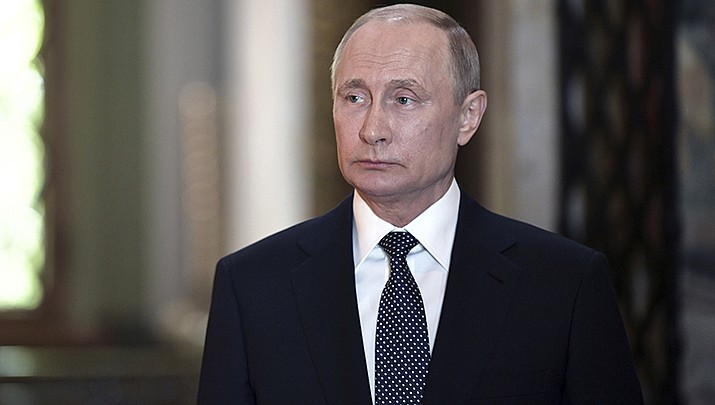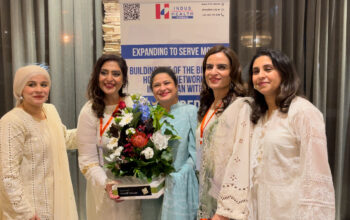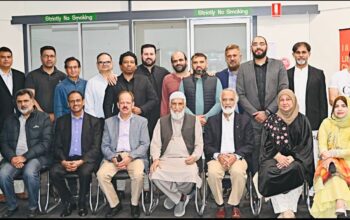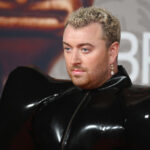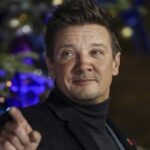Pressure is mounting on Vladimir Putin on and off the battlefield
Pressure on Russian President Vladimir Putin mounted on the battlefield and in the halls of global power as Ukrainian troops pushed their counteroffensive on Saturday to advance farther into Ukraine’s partly recaptured northeast.
Western officials and analysts said Russian forces were apparently setting up a new defensive line in Ukraine’s northeast after the counteroffensive punched through the previous one, allowing Kyiv’s soldiers to recapture large swaths of land in the northeastern Kharkiv region that borders Russia.
Putin, at a high-level summit in Uzbekistan this week, vowed to press his attack on Ukraine despite the recent military setbacks but also faced concerns by India and China over the drawn-out conflict.
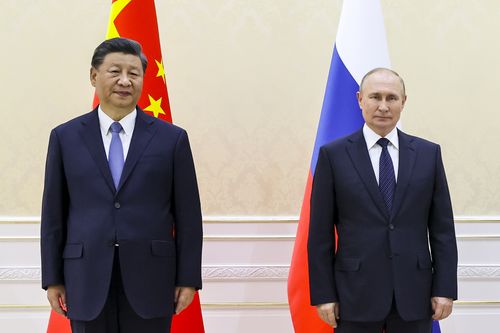
“I know that today’s era is not of war,” Indian Prime Minister Narendra Modi told the Russian leader in televised comments as they met Friday in Uzbekistan.
“We discussed this with you on the phone several times, that democracy and dialogue touch the entire world.”
At the same summit a day earlier, Putin acknowledged China’s unspecified “questions and concerns” about the war in Ukraine while thanking President Xi Jinping for Beijing’s “balanced position” on the conflict.
The hurried retreat of Russian troops this month from parts of a northeast region they occupied early in the war, together with the rare public reservations expressed by key allies, underscored the challenges that Putin faces on all fronts. Both China and India have maintained strong ties with Russia and had sought to remain neutral on Ukraine.
Xi, in a statement, expressed support for Russia’s “core interests” but also wanted to work together to “inject stability” into world affairs. Modi said he wanted to discuss “how we can move forward on the path of peace,” adding that the biggest concerns facing the world are the problems of food security, fuel security and fertilizers.

“We must find some way out and you too must contribute to that,” Modi stressed in a rare public rebuke.
The comments cast a shadow over a summit that Putin had hoped would burnish his diplomatic status and show he was not so internationally isolated.
On the battlefield, Britain’s Defence Ministry said the new front line likely was between the Oskil River and Svatove, 150 kilometres southeast of Kharkiv, Ukraine’s second-largest city.
After Russian troops retreated from the city of Izium, Ukrainian authorities discovered a mass grave site, one of the largest found so far.
President Volodymyr Zelenskyy said that there were more than 440 graves at the location containing the bodies of hundreds of civilian adults and children, as well as soldiers, and that some had been tortured, shot or killed by artillery shelling. He cited evidence of atrocities, such as a body with a rope around its neck and broken arms.
“Torture was a widespread practice in the occupied territory. That’s what the Nazis did. That’s what (the Russians) do,” Zelenskyy said Saturday in his nightly video address.
“We will establish the identity of all those who tortured, who mocked, who brought this atrocity from Russia here to Ukrainian soil.”
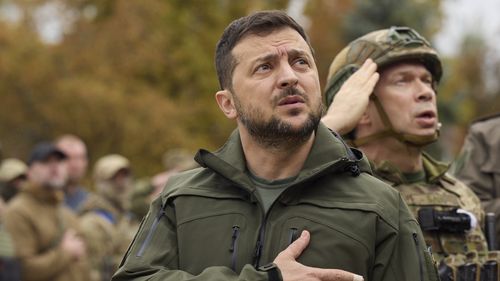
Ukrainian forces, in the meantime, were crossing the Oskil River in the Kharkiv region and have placed artillery there, the Washington-based Institute for the Study of War said Saturday. The river, which flows south from Russia into Ukraine, had been a natural break in the newly emerged front lines since Ukraine launched its counteroffensive about a week ago.
“Russian forces are likely too weak to prevent further Ukrainian advances along the entire Oskil River,” the institute said.
Videos circulating online indicated that Ukrainian forces were continuing to retake land in the country’s embattled east, although their veracity could not be independently verified.
One showed a Ukrainian soldier walking past a damaged building and then pointing at a colleague hanging the blue-and-yellow Ukrainian flag over a mobile phone tower. The soldier identified the seized village as Dibrova, just northeast of the city of Sloviansk in Ukraine’s Donetsk region.
Another video showed two Ukrainian soldiers in what appeared to be a bell tower, with one saying they had retaken the village of Shchurove, also northeast of Sloviansk.
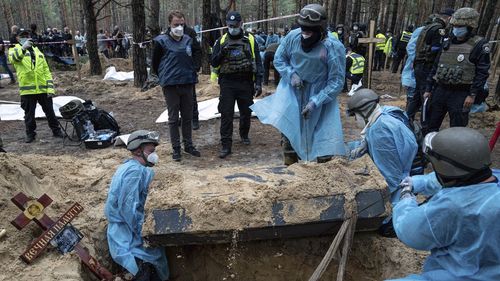
The Ukrainian military and Russia did not comment on the two villages.
Elsewhere, Russian forces continued pounding cities and villages with missile strikes and shelling.
A Russian missile attack early Saturday started a fire in Kharkiv’s industrial area, regional Governor Oleh Syniehubov said. Firefighters extinguished the blaze.
Syniehubov said remnants suggested the Russians fired S-300 surface-to-air missiles at the city. The S-300 is designed for striking missiles or aircraft in the sky, not targets on the ground. Analysts say Russia’s use of the missiles suggests they may be running out of some precision munitions.
Shelling of the nearby city of Chuhuiv later in the day killed an 11-year-old girl, Syniehubov reported.
In the southern Zaporizhzhia region, a large part of which is occupied by Russian forces, one person was wounded in shelling of the city of Orikhiv, the region’s Ukrainian governor, Oleksandr Starukh, reported on Telegram. He said Russian troops also shelled two villages in the region, destroying several civilian facilities.
Explosions were also reported in Russian-occupied parts of Zaporizhzhia. Russian-installed official Vladimir Rogov said on Telegram that at least five blasts were heard in the city of Melitopol. The city’s Ukrainian mayor, Ivan Fedorov, said they were in a village south of the city, where the Russian troops had relocated some military equipment.
Ukraine’s central Dnipropetrovsk region also came under Russian fire overnight, according to its governor, Valentyn Reznichenko.
“The enemy attacked six times and launched more than 90 deadly projectiles on peaceful cities and villages,” he said.
Meanwhile, Ukraine’s atomic energy operator, Energoatom, said a convoy of 25 trucks had brought diesel and other critical supplies to the Zaporizhzhia nuclear power plant — Europe’s largest — which was shut down a week ago amid fears that nearby fighting could result in a radiation disaster.

The trucks were allowed through Russian checkpoints Friday to deliver spare parts for repairs of damaged power lines, chemicals for the operation of the plant and additional fuel for backup diesel generators, Energoatom said.
The six-reactor plant was captured by Russian forces in March but is operated by Ukrainian engineers. Its last reactor was switched off Sunday after repeated power failures due to shelling put crucial safety systems at risk.
The International Atomic Energy Agency reported Saturday that one of the nuclear plant’s four main external power lines had been repaired.
The Russian military accused Ukraine of renewed artillery shelling of the power plant. Ukrainian authorities did not immediately address the claim.
In Russia, one person was killed and two others wounded Saturday by shelling, according to Vyacheslav Gladkov, governor of the Russian border region of Belgorod. Gladkov blamed Ukraine. The claim could not be verified.

